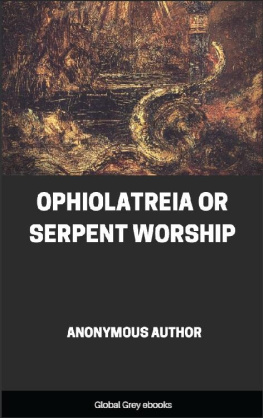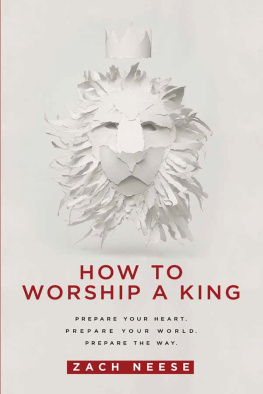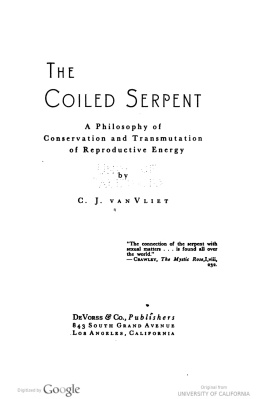Anonymous Author - Ophiolatreia or Serpent Worship
Here you can read online Anonymous Author - Ophiolatreia or Serpent Worship full text of the book (entire story) in english for free. Download pdf and epub, get meaning, cover and reviews about this ebook. year: 2018, publisher: Global Grey ebooks, genre: Religion. Description of the work, (preface) as well as reviews are available. Best literature library LitArk.com created for fans of good reading and offers a wide selection of genres:
Romance novel
Science fiction
Adventure
Detective
Science
History
Home and family
Prose
Art
Politics
Computer
Non-fiction
Religion
Business
Children
Humor
Choose a favorite category and find really read worthwhile books. Enjoy immersion in the world of imagination, feel the emotions of the characters or learn something new for yourself, make an fascinating discovery.
- Book:Ophiolatreia or Serpent Worship
- Author:
- Publisher:Global Grey ebooks
- Genre:
- Year:2018
- Rating:5 / 5
- Favourites:Add to favourites
- Your mark:
- 100
- 1
- 2
- 3
- 4
- 5
Ophiolatreia or Serpent Worship: summary, description and annotation
We offer to read an annotation, description, summary or preface (depends on what the author of the book "Ophiolatreia or Serpent Worship" wrote himself). If you haven't found the necessary information about the book — write in the comments, we will try to find it.
Ophiolatreia or Serpent Worship — read online for free the complete book (whole text) full work
Below is the text of the book, divided by pages. System saving the place of the last page read, allows you to conveniently read the book "Ophiolatreia or Serpent Worship" online for free, without having to search again every time where you left off. Put a bookmark, and you can go to the page where you finished reading at any time.
Font size:
Interval:
Bookmark:
OPHIOLATREIA
AN ACCOUNT OF THE RITES AND MYSTERIES CONNECTED WITH THE ORIGIN, RISE AND DEVELOPMENT OF SERPENT WORSHIP IN VARIOUS PARTS OF THE WORLD
BY
ANONYMOUS
1889
Ophiolatreia or Serpent Worship By Anonymous.
This edition was created and published by Global Grey
GlobalGrey 2018

globalgreyebooks .com
Ophiolatreia an extraordinary subject---Of mysterious origin---Of universal prevalence---The serpent a common symbol in mythology---Serpent-worship natural but irrational---Bacchic orgies---Olympias, mother of Alexander, and the Serpent emblam---Thermutis, the Sacred Serpent---Asps---Saturn and his children---Sacrifices at altar of Saturn---Abaddon---Ritual of Zoroaster---Theology of Ophion---The Cuthites---The Othiogeneis--The Ophiomans---Greek Traditions---Cecrops---Various Serpent worshippers.
Ophiolatreia, the worship of the serpent, next to the adoration of the phallus, is one of the most remarkable, and, at first sight, unaccountable forms of religion the world has ever known. Until the true source from whence it sprang can be reached and understood, its nature will remain as mysterious as its universality, for what man could see in an object so repulsive and forbidding in its habits as this reptile, to render worship to, is one of the most difficult of problems to find a solution to. There is hardly a country of the ancient world, however, where it cannot be traced, pervading every known system of mythology, and leaving proofs of its existence and extent in the shape of monuments, temples, and earthworks of the most elaborate and curious character. Babylon, Persia, Hindostan, Ceylon, China, Japan, Burmah, Java, Arabia, Syria, Asia Minor, Egypt, Ethiopia, Greece, Italy, Northern and Western Europe, Mexico, Peru, America---all yield abundant testimony to the same effect, and point to the common origin of Pagan systems wherever found. Whether the worship was the result of fear or respect is a question that naturally enough presents itself, and in seeking to answer it we shall be confronted with the fact that in some places, as Egypt, the symbol was that of a good demon, while in India, Scandinavia, and Mexico, it was that of an evil one. It has been remarked that in the warmer regions of the globe, where this creature is the most formidable enemy which man can encounter, the serpent should be considered the mythological attendant of an evil being is not surprising, but that in the frozen or temperate regions of the earth, where he dwindles into the insignificances of a reptile without power to create alarm, he should be regarded in the same appalling character, is a fact which cannot be accounted for by natural causes. Uniformity of tradition can alone satisfactorily explain uniformity of superstition, where local circumstances are so discordant.
"The serpent is the symbol which most generally enters into the mythology of the world. It may in different countries admit among its fellow-satellites of Satan the most venomous or the most terrible of the animals in each country, but it preserves its own constancy, as the only invariable object of superstitious terror throughout the habitable world. 'Wherever the Devil reigned,' remarks Stillingfleet, 'the serpent was held in some peculiar veneration.' The universality of this singular and irrational, yet natural, superstition it is now proposed to show. Irrational, for there is nothing in common between deity and a reptile, to suggest the notion of Serpent-worship; and natural, because, allowing the truth of the events in Paradise, every probability is in favour of such a superstition springing up." (Deane.)
It may seem extraordinary that the worship of the serpent should ever have been introduced into the world, and it must appear still more remarkable that it should almost universally have prevailed. As mankind are said to have been ruined through the influence of this being, we could little expect that it would, of all other objects, have been adopted as the most sacred and salutary symbol, and rendered the chief object of adoration. Yet so we find it to have been, for in most of the ancient rites there is some allusion to it. In the orgies of Bacchus, the persons who took part in the ceremonies used to carry serpents in their hands, and with horrid screams call upon "Eva, Eva." They were often crowned with serpents while still making the same frantic exclamation. One part of the mysterious rites of Jupiter Sabazius was to let a snake slip down the bosom of the person to be initiated, which was taken out below. These ceremonies, and this symbolic worship, are said to have begun among the Magi, who were the sons of Chus, and by them they were propagated in various parts. Epiphanius thinks that the invocation "Eva, Eva," related to the great mother of mankind, who was deceived by the serpent, and Clemens of Alexandria is of the same opinion. Others, however, think that Eva was the same as Eph, Epha, Opha, which the Greeks rendered Ophis, and by it denoted a serpent. Clemens acknowledges that the term Eva, properly aspirated, had such a signification.
Olympias, the mother of Alexander, was very fond of these orgies, in which the serpent was introduced. Plutarch mentions that rites of this sort were practised by the Edonian women near Mount Hmus in Thrace, and carried on to a degree of madness. Olympias copied them closely in all their frantic manuvres. She used to be followed with many attendants, who had each a thyrsus with serpents twined about it. They had also snakes in their hair, and in the chaplets which they wore, so that they made a most fearful appearance. Their cries also were very shocking, and the whole was attended with a continual repetition of the words, Evoe, Saboe, Hues Attes, Attes Hues, which were titles of the god Dionusus. He was peculiarly named Hues, and his priests were the Hyades and Hyautes. He was likewise styled Evas.
In Egypt was a serpent named Thermuthis, which was looked upon as very sacred; and the natives are said to have made use of it as a royal tiara, with which they ornamented the statues of Isis. We learn from Diodorus Siculus that the kings of Egypt wore high bonnets, which terminated in a round ball, and the whole was surrounded with figures of asps. The priests, likewise, upon their bonnets had the representation of serpents. The ancients had a notion that when Saturn devoured his own children, his wife Ops deceived him by substituting a large stone in lieu of one of his sons, which stone was called Abadir. But Ops and Opis, represented here as a feminine, was the serpent deity, and Abadir is the same personage under a different denomination. Abadir seems to be a variation of Ob-Adur, and signifies the serpent god Orus. One of these stones, which Saturn was supposed to have swallowed instead of a child, stood, according to Pausanias, at Delphi. It was esteemed very sacred, and used to have libations of wine poured upon it daily; and upon festivals was otherwise honoured. The purport of the above was probably this: it was for a long time a custom to offer children at the altar of Saturn; but in process of time they removed it, and in its room erected a stone pillar, before which they made their vows, and offered sacrifices of another nature. This stone which they thus substituted was called Ab-Adar, from the deity represented by it. The term Ab generally signifies a father, but in this instance it certainly relates to a serpent, which was indifferently styled Ab, Aub, and Ob. Some regard Abadon, or, as it is mentioned in the Book of Revelation, Abaddon, to have been the nameof the same Ophite god, with whose worship the world had been so long infected. He is termed Abaddon, the angel of the bottomless pit---the prince of darkness. In another place he is described as the dragon, that old serpent, which is the devil, and Satan. Hence the learned Heinsius is supposed to be right in the opinion which he has given upon this passage, when he makes Abaddon the same as the serpent Pytho.
Next pageFont size:
Interval:
Bookmark:
Similar books «Ophiolatreia or Serpent Worship»
Look at similar books to Ophiolatreia or Serpent Worship. We have selected literature similar in name and meaning in the hope of providing readers with more options to find new, interesting, not yet read works.
Discussion, reviews of the book Ophiolatreia or Serpent Worship and just readers' own opinions. Leave your comments, write what you think about the work, its meaning or the main characters. Specify what exactly you liked and what you didn't like, and why you think so.














